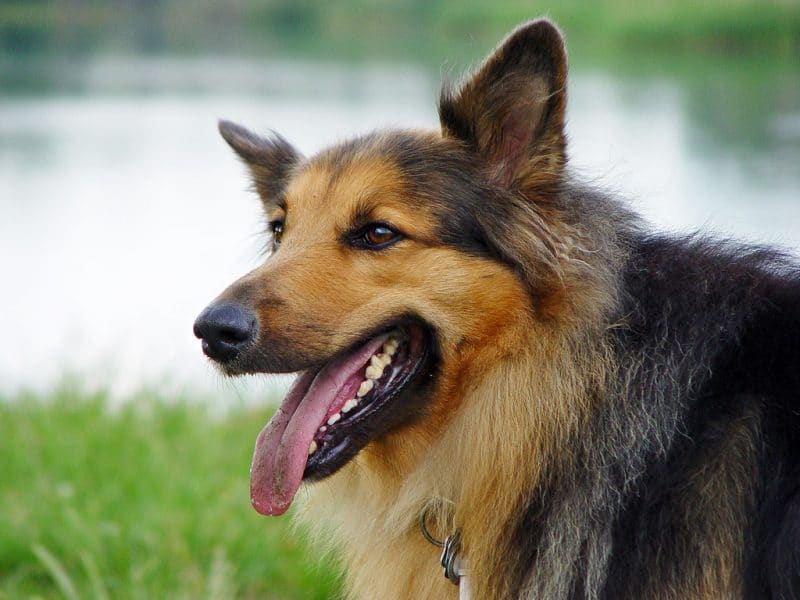 The aftermath of dealing with dog bites can be tricky, especially when young children are involved. According to the American Veterinary Medical Association, each year, more than 4.5 million people in the U.S. are bitten by dogs. Of these 4.5 million, nearly 1 in 5 require medical attention for their dog bite or roughly 800,00 Americans. At least half of all medically-treated dog bites in the U.S. belong to children.
The aftermath of dealing with dog bites can be tricky, especially when young children are involved. According to the American Veterinary Medical Association, each year, more than 4.5 million people in the U.S. are bitten by dogs. Of these 4.5 million, nearly 1 in 5 require medical attention for their dog bite or roughly 800,00 Americans. At least half of all medically-treated dog bites in the U.S. belong to children.
Although certain dog breeds are genetically more aggressive and more prone to biting, it is impossible to tell if a dog will bite simply by looking at it.
Dogs do not bite “out of the blue” or simply because they are bored. Dogs of all breeds and dispositions can become biters if placed under stressful circumstances. In the majority of cases, dogs bite as a defensive measure—not because they are vicious by nature.
Table of Contents
Why dogs bite
According to Doggone Safe, a non-profit organization that specializes in dog bite prevention, dogs bite for a variety of reasons. Those reasons include, but are not limited to:
- The dog is protecting a possession, dish, or puppies
- The dog is protecting a resting place
- The dog is protecting its owner or the owner’s property
- A child has done something to provoke or frighten the dog
- The dog is old or having a bad day and is not able to be patient with children
- The dog is injured or sick
- The child has hurt or startled the dog
- The dog has not learned bite inhibition and bites hard by accident when the child offers food or a toy to the dog
- A child and dog are engaging in rough play and the dog gets overly excited
- The dog views the child as a prey item because the child is running and or/screaming near the dog
- The dog views the child as a prey item because the child is riding a bicycle or otherwise moving past the dog
- The dog is of a herding breed and nips while trying to “herd” the children
As is demonstrated by this list, dogs are much more likely to bite children than adults. Children make more noise and move around more than adults, and they have less of a solid understanding of when to leave a dog alone. According to the American Veterinary Medical Association, children, elderly people, and postal carriers are the three major types of dog bite victims.
Before dogs bite
Doggone Safe goes on to explain that dogs typically give clear warning signs before they bite. These warning signs include, but are not limited to:
- The dog gets up and moves away from the child
- The dog turns its head away from the child
- You can see the whites of the dog’s eyes in a half-moon shape
- The dog yawns while the child approaches or is interacting with it
- The dog suddenly starts scratching, biting, or licking itself
- The dog licks its chops while the child is approaching or interacting with the dog
- The dog does a “wet dog shake” after the child stops touching him
While these lists are not all-inclusive, they shed important light on certain dog behaviors.
Human responsibility
May 18–24, 2014, is National Dog Bite Prevention Week. There are an estimated 70 million dogs living in U.S. households, and most dog bites can be prevented if parents and children know which warning signs to look for. By practicing proper “dog etiquette,” you reduce the chances of a dog becoming overly stressed out. Dogs that do not feel stressed, threatened, or in danger do not feel the need to bite or attack.
In her blog, veterinarian and animal behaviorist Dr. Sophia Yin discusses the responsibility humans bear when it comes to preventing dog bites. Yin explains how humans often approach dogs inappropriately, thinking it is always safe to stick out their hand as a sign of friendship. Humans then expect the dog to sniff their hand and to be completely docile—but often a dog can feel threatened or afraid by this gesture, resulting in growling or even a bite.
Yin also describes common ways that dogs physically show fear and anxiety:
- Slight and major cowering
- Lowering their head
- Pointing their ears back or to the side
- Placing their tail between their legs
- Licking their lips when there is no sign of food
- Panting when not hot or thirsty
- Furrowing their brow
- Moving in slow motion
- Being hypervigilant
- Acting sleepy or yawning when they shouldn’t be tired
- Sudden loss of appetite
- Moving away
- Pacing
Although these behaviors can be signs of other moods or problems, recognizing them in a context of new or frightening people or situations can help keep dog owners and dog lovers aware of potentially dangerous situations.
When dealing with both familiar and unfamiliar dogs, it is important to respect the space of the dog and not to approach the dog too quickly. Teach your young children how to properly approach a dog, and keep a close eye on them if they are petting or playing with dogs.
For more information and tips on how to stay safe around dogs, visit the Doggone Safe homepage.
